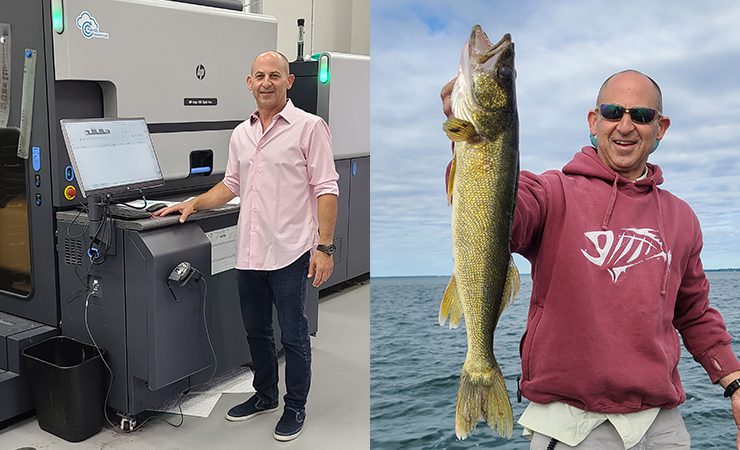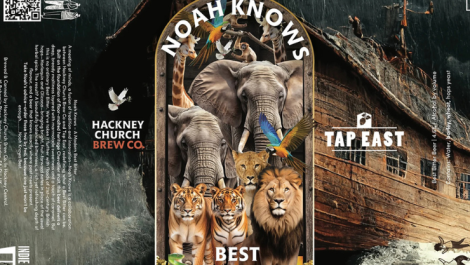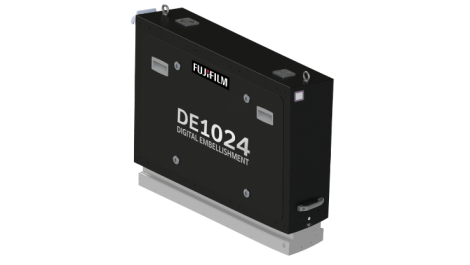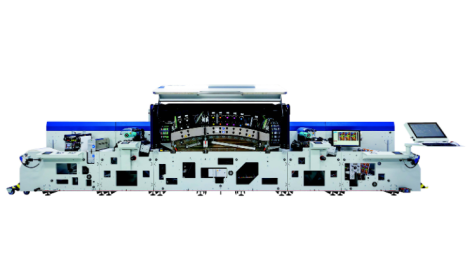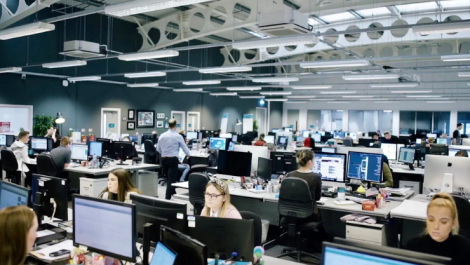As a veteran of print with almost three decades of experience to call upon, founder and fisherman Warren Werbitt has seen some big changes in digital down the years, and predicts even more to come.
Tell us about your history with print?
I have been in the print industry since 1992. When I started my company we were running two, 365 AB Dick duplicator presses. When I left, we were set up for commercial print and packaging with KBA UV presses up to 56in and we had installed the first Xerox iGen 5 with all the options, providing full digital capabilities to our clients as well as a complete large format and flexo department.
Today I’m helping the print industry face business truths. As a speaker, presenter, consultant and fractional CEO, I am taking my past experiences, successes and failures, to help printers drive revenue. This could include everything from a comprehensive business process audit – to cold-calling strategies. After all, we learn more from our failures.
Tell us how and where digital printing fits in?
When I first started with digital printing, it was with Xerox’s 5000. Except for the glitches that come along with new technology, my experience has been positive. Right from the start, there has always been a place for digital technology.
I’ve seen digital print grow up in front of my eyes. The change has been incredible, and it doesn’t seem to stop. From the early days of ink jetting, when all you could do was print an address, to today where everything can be individually personalised including entire chunks of text, colours and images.
I think digital printing is very important to the future of our industry. The first thought that comes to mind is the shortening of print runs and the lower cost to the print owner. On the client side, the unit cost might not be less, but there will be the ability to order what you need without the excess cost. The client now has more opportunity to market to their clients using many different approaches – and puts the printer at the top of the food chain.
Today’s customers expect a one-of-a-kind, hyper personal experience – and digital print delivers that. Digital print is the gateway to interactive print, like AR and the perfect addition to digital marketing efforts.
What lessons have you learnt during your time using digital?
The most important lesson I learned was to truly understand your costing. Too many companies just take the click charge and mark it up. You must remember there is a machine, space, person(s) and consumables to factor in. Then you can build in your profit.
The second lesson I learned after buying our first machine was to make sure that you’re getting the right machine/technology for your needs. Salespeople will try to sell you everything and it is easy to get excited. You must do your research and know what it is that you want to do or at least have an idea in which direction you’re headed. In other words, how will this make money? At the end of the day you know your business best.
What advice would you offer to others?
It is simple; you must have an idea of what you want to do. The days of build it and they will come are over. Research is a must.
Talk to your customers. Find out where they’re spending their marketing dollars and what their goals are. Figure out which customers you could really help with this new solution and how you can help them achieve their goals. Then find more just like them.
How do you see the future for digital print developing, particularly post-pandemic?
I only see digital print getting stronger post-pandemic. With run lengths coming down, offset will not be competitive. Digital allows printers to be highly reactive to market trends.
But you need to understand that to truly make money, you need to understand data. That’s going to become more and more important. And if you don’t understand it, partner or outsource to someone who does.
How has COVID-19 impacted you and your activities in print?
To be honest, it killed me. Everything I had lined up prior to the end of March was cancelled. I was supposed to speak at a couple of conferences and had a few clients I was going to visit. With the lockdown it has thrown everything up in the air.
But I have been keeping up my presence on LinkedIn and have participated in many group Zoom calls, which have been awesome. I don’t remember the last time I have seen so many people interested in what’s happening today and what can be done going forward. I’m happy to report that I have picked up some projects from that.
How will the print industry emerge from the pandemic?
It will come back, I just think it will take a while. If we look around us, we see that everything is still very shaky. Right now, from what I hear and see a lot of companies are still making PPE safety gear and COVID signage. That’s not going to disappear. In fact, it will become another opportunity to introduce marketing, seasonal and safety messaging.
What role will event and exhibitions play in this future?
Well, I would like to think that they will be back in some capacity in the not-too-distant future. I believe that trade shows and events are very important. It is where real people connect with each other to form real relationships. Personally, when I’m at an event I learn more from people than I do just about anywhere else.
The future of trade shows is the $64,000 question. Everything will depend on how fast a vaccine is found and border restrictions are lifted. Until then there’s just too much uncertainty; folks need to feel comfortable travelling again.
Outside of the office, what are your passions?
It is extremely important for everyone to have some hobbies/activities that they like to fill their time. If one doesn’t take some mental time off work, they will only last so long before burning out. Having activities allows us to keep our creative thoughts going.
My favourite hobby is fishing. For me there is nothing better than being in the boat with my kids or friends. Actually, one better is when I get kids in the boat who have never fished before. It’s one of the most gratifying experiences there is.
This interview features in the July/August 2020 issue of Digital Labels & Packaging; register here to receive the magazine for free

